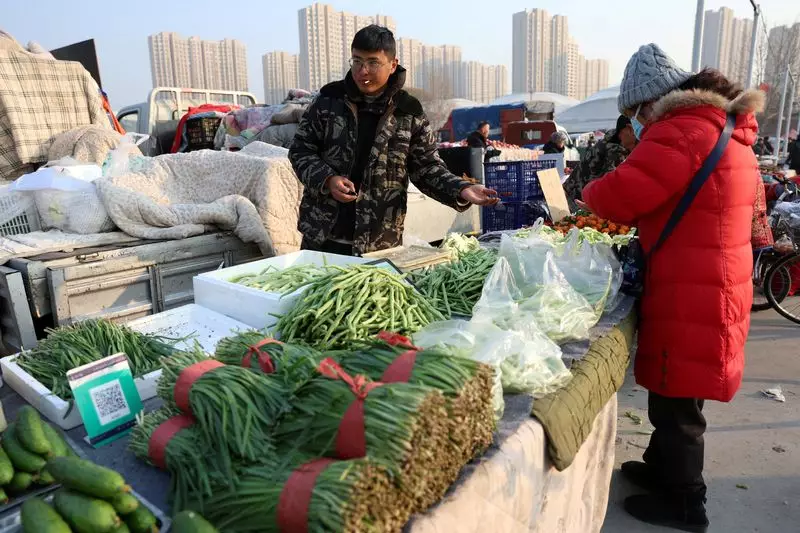In October, China’s economic indicators presented a mixed bag, indicative of a tepid recovery trajectory marred by persistent deflationary pressures and weak consumer demand. Recent data revealed that consumer prices rose by a mere 0.3% year-on-year, marking the slowest growth seen in four months, while the producer price index (PPI) registered a sharper decline at 2.9%. These figures raise fundamental questions about the effectiveness of the government’s stimulus measures and the overall health of the Chinese economy.
The sluggish rise in consumer prices is especially disconcerting for policymakers. Analysts had anticipated a more robust increase, forecasting a rise of 0.4%. The latest performance of the consumer price index (CPI), although slightly better than the previous month’s 0.4%, signals that consumer enthusiasm remains dampened. Excluding volatile components such as food and fuel, core inflation showed marginal growth, suggesting persistent fragility in domestic demand.
In response to these challenging economic indicators, Beijing has attempted to unearth its fiscal muscles with a colossal stimulus package amounting to 10 trillion yuan (approximately $1.4 trillion). However, this initiative, aimed primarily at alleviating local government debt burdens rather than augmenting direct fiscal liquidity, has been met with skepticism from financial analysts and market observers.
Bruce Pang, Chief Economist at JLL, articulated that the delayed impact of these stimulus policies, notably during the Golden Week holiday in early October, has left consumers and investors apprehensive about immediate recovery. This hesitance underscores a broader concern: that the measures implemented may lack the urgency to galvanize economic activity and rejuvenate consumer spending in the short term. The anticipated tax policies directed at stimulating the housing market, as mentioned by Finance Minister Lan Foan, are viewed as crucial yet insufficient to reinvigorate consumer sentiment markedly.
Compounding the situation are the deflationary pressures permeating the economy, fueled largely by plunging food prices and the plummeting real estate sector—where an alarming 70% of household wealth is concentrated. This scenario creates a reluctance among consumers to spend, leading to a vicious cycle of stunted growth. The real estate market, once a significant pillar supporting China’s economic framework, has taken a nosedive, cementing the necessity for a revival strategy rooted in consumer confidence.
The continued decline in producer prices not only reflects a contraction in manufacturing output but also one of the most significant setbacks experienced in recent months. Sectors such as petroleum extraction, coal processing, and chemical manufacturing are bearing the brunt of this downturn, reinforcing the need for multifaceted strategies aimed at alleviating these pressures.
Looking forward, Goldman Sachs has projected a low inflation rate of approximately 0.8% in the upcoming year, coupled with a timeline extending to Q3 2025 for producer prices to regain positive territory. Such predictions cast a longer shadow over the prospects for recovery.
However, there may still be glimmers of hope. Economic experts like Zhou Maohua suggest that if implemented effectively, counter-cyclical policies could potentially bolster consumption and enhance investment momentum. The impending return of Donald Trump to the U.S. presidency in January may also play a role in shaping China’s economic strategies, as analysts anticipate that Beijing could be biding its time to retain economic resources until the global economic landscape becomes more favorable.
China’s economic landscape, defined by diverging consumer and producer price trends, ongoing deflation, and a hesitant consumer base, suggests a period of careful navigation ahead. The government’s stimulus initiatives, while substantial, may require a transition from debt relief approaches to more robust spending incentives to catalyze momentum in domestic consumption. As stakeholders closely monitor the development of these economic dynamics, the path toward recovery appears fraught with challenges yet laden with opportunities for revitalization. The current climate demands strategic policymaking and vigilant observation of emerging trends to harness China’s vast economic potential responsibly.

